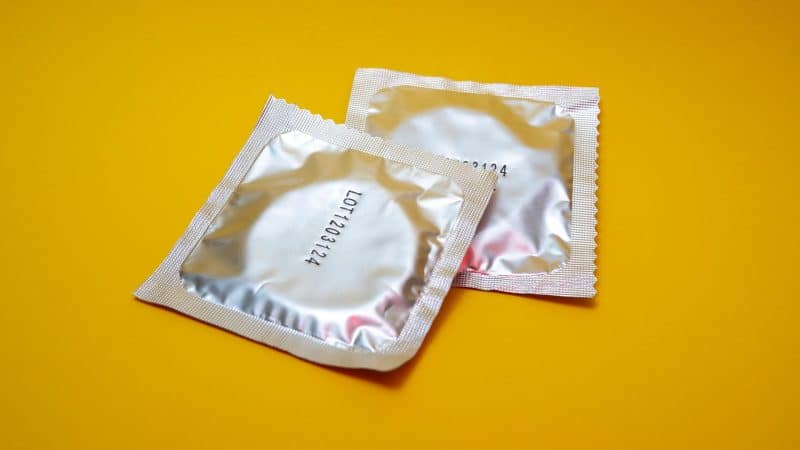32 Action-Inducing STD Statistics for a Healthier 2023

Despite efforts to control sexually transmitted diseases, STD statistics still show increasing rates across the world, particularly among young people.
In light of such somber data, it’s becoming more important than ever to stay informed and get the full picture when it comes to STD symptoms, transmission, and treatment.
Let’s check out 32 crucial STD stats everyone should know in 2022.
Ten Key STD Statistics and Facts to Be Aware of in 2022
- According to statistics on STD transmission, half of all sexually active people will get an STD by the time they reach 25.
- Women are more at risk from STDs than men.
- US STD rates hit a record high in 2018.
- Gonorrhea incidence rates increased by 5% between 2017 and 2018.
- Men made up almost 86% of all syphilis cases in the US.
- Vermont (0.12) has the lowest STD index rates.
- One in 500 students has HIV, college STD statistics reveal.
- One-third of students from developing and third-world countries aren’t familiar with any other STDs except AIDS.
- The US has the highest rate of sexually transmitted infections, STD statistics by country indicate.
- There are more than 127 million new cases of chlamydia in the world every year, and over 500 million people are suffering from herpes.
General STD Statistics and Facts
Before we dive into specifics, take a look at some of the most important general facts and data on STDs.
1. Most types of STDs don’t have any (noticeable) symptoms.
(Let’s Get Checked)
Even if you don’t have (or see) any symptoms, this doesn’t mean you’re in the clear of infections and diseases after having unprotected sex. In fact, 80% of STIs show little to no symptoms, which is why we should always use protection.
2. Statistics on STD show that half of all sexually active people will get an STD by the time they are 25.
(ASHA)
Around 50% of sexually active people will most likely get an STI before they reach 25 years of age. Half of all new HIV infections occur in this age range, as do half of all new STD cases.
3. Cases of chlamydia, gonorrhea, and syphilis are on the rise among people older than 65.
(Healthgrades)
Although most of the cases were reported as STDs in teens or adolescents, stats still counted a surprising number of adults past middle age with these STIs. In the last five years, chlamydia and syphilis cases almost doubled among men and women over 65, while gonorrhea incidence almost tripled.
4. STD statistics reveal that women are more at risk from STDs than men.
(STDCenterNY)
Actually, women have a 60 to 90% chance of contracting gonorrhea by a male, as opposed to men, whose risk of getting an STI from a female partner is only 20%. A similar situation is noted with trichomonas, where women are 67% to 100% likely to get infected from male partners, while men have a 14% to 60% chance of getting the STD from an infected female.
5. Blacks in the US are 7.7 times more likely to get infected with gonorrhea than Whites.
(CDC)
STD statistics report that chlamydia and syphilis rates are also higher for Blacks than other races and ethnicities in the US. Black females aged 15 to 24 had the highest number of reported chlamydia incidence, or 4.5 times the rate of Whites, the CDC’s STD registry reports. STD statistics by race also reveal that congenital syphilis cases increased by a staggering 126.7% among Black people from 2014 to 2018.
6. 83% of HIV and STD disease tracers did not complete their usual field visits due to the coronavirus.
(Business Insider)
A similar situation was noted in the clinics across the country. Two-thirds of the clinics in the US, or 66%, reported a decline in the number of health screenings and STD testing. All of these could mean that STDs are silently on the rise during the pandemic.
College and Teenage STD Statistics
Even though teens and young adults between the ages of 15 and 24 account for only a quarter of the sexually active population, they still make up half of all the new reported STDs.
Keep reading for more facts and stats on adolescent and teen STD statistics.
[visualizer id=”98167″]
7. 460,000 young people were infected with HIV in 2019.
(UNICEF)
Out of those young people, 170,000 were between the ages of 10 and 19.
We’ve already noted that more than 50% of all STDs are contracted by young people. However, we also must mention that this same demographic represents 5% of all people with HIV and 10% of new infections.
8. One in 500 students have HIV, college STD statistics reveal.
(State University)
At least 50% of newly infected patients in the US are under 25 years old. Not surprising, considering that as many as 85% of heterosexual students don’t feel they are at risk from the disease, and only 7% to 20% of students with more partners used a condom during intercourse.
9. Between 2014 and 2018, gonorrhea rates in males aged 15 to 24 increased by 44.1%.
(CDC)
Even though gonorrhea prevalence among males decreased by 0.9% (for 15- to 19-year-olds) and 1% (for 20- to 24-year-olds), the overall incidence increased by 44.1% (for 15- to 19-year-olds) and 49.2% (for 20- to 24-year-olds) in just four years.
10. England saw the largest increase in gonorrhea cases among 20- to 24-year-olds.
(BBC)
The number of newly infected young people with this STD increased by 28% between 2018 and 2019 or jumped from 13,623 to 17,443 cases. Experts believe that the lockdown caused by COVID-19 will likely drive up rates of STDs among young people and make STD statistics for even grimmer.
11. One-third of students from developing and third-world countries lack knowledge about STDs.
(NCBI)
Data and STD statistics on college students from third-world countries show rather tragic results. While 99% of all students know about the existence of HIV, less than half of the students who took part in this study knew about other STDs.
12. There were 1,087,277 chlamydial infections reported by teens and adolescents.
(CDC)
These teen STD rates translate to 61.8% of all chlamydia cases in the US, increasing by 1.6% to 1.8% between 2017 and 2018. Interestingly, rates of reported chlamydia cases are the highest among women, which is attributed to targeted screening of young women.
13. Prevalence of HPV considerably declined among 14- to 24-year-olds females following vaccination.
(CDC) (Dr. Anita Sadaty)
HPV vaccines have had a significant impact on genital HPV infections among adolescent and young girls and anogenital warts in young men and women, as well as among teenage boys and girls. Some vitamins like B-complex, vitamin D, and antioxidants like the best turmeric supplements can help build up your immune system and help you fight the infection.
STD Rates and STD Statistics in the US
There were 2,457,118 reported cases of STDs in the US. On top of that, the number of primary and secondary syphilis infections reached over 35,000—the highest reported rate since 1991.
14. In 2018, STD rates hit a record high in the US.
(The Hill)
According to the CDC’s latest report, the combined number of syphilis, gonorrhea, and chlamydia cases in the US have been on the rise for five consecutive years, reaching a record high in 2018. The report points to financial cuts in STD programs and the decline in the use of condoms among young people and gay men as the main reasons behind the increase.
15. Human papillomavirus (HPV) is the most common STD in the US, STD prevalence stats show.
(Healthline)
Affecting more than 79 million Americans, HPV is most prevalent among sexually active young adults and teens. As of 2017, chlamydia, with more than 1.7 million registered cases in the US, and gonorrhea (more than 50 million) are the second and third most common sexual diseases in America.
16. Judging by STD rates in America, chlamydia is most prevalent among young people.
(ASHA)
As many as one in twenty sexually active young women (14 to 24 years of age) have this bacterial infection. This group also faces the most severe consequences of an undiagnosed STD.
17. Gonorrhea incidence rates increased by 5% between 2017 and 2018.
(CDC)
CDC gonorrhea facts and stats point out that this STD is on the rise, increasing by 5% in just one year. Gonorrhea cases are highest among young females (702.6 cases per 100,000 females), followed by female teens (548.1 cases per 100,000 females), adolescent and teenage STD rates from 2014 to 2018 reveal.
18. There is only one highly effective antibiotic against gonorrhea left.
(CDC)
One of the core problems with gonorrhea is its mounting antibiotic resistance, making it one of the more complex sexually transmitted diseases simply because ceftriaxone is virtually the only treatment that still effectively fights it. Even though a healthy diet alone cannot treat the disease, supplements like vitamin C, vitamin K, and zinc can certainly help.
19. There are a total of 115,045 cases of syphilis, STD statistics in the US show.
(CDC)
There were 35,063 cases of primary and secondary syphilis reported in 2018. Even more disturbing, the number of congenital syphilis cases (i.e., when an infected mother passes the disease to the baby during pregnancy) increased by 40% leading to the death of 94 newborns.
20. Men made up almost 86% of all syphilis cases in the US.
(CDC)
There is a disproportionate number of primary and secondary syphilis cases among gay, bisexual, and other men who have sex with men. This group, STI facts and stats indicate, accounted for more than half (54%) of all syphilis cases in the US.
21. Around 1.1 million people are living with HIV in the US.
(ASHA) (CDC)
HIV statistics are continually grim, with 1 in 5 people not even being aware of the fact that they’re suffering from the virus. What’s more, STD statistics from 2019 show that less than 40% of Americans had an HIV test. Less than 30% of at-risk people in the US, according to the CDC’s STD guidelines, were tested in 2018.
22. STD statistics for 2020 show that Mississippi has the highest STD index score.
(Alarms)
According to data from the CDC’s 2018 STD Surveillance Report, the state of Mississippi (with a 0.83 index score) has the highest rate of STDs, followed by Nevada (0.81) and Louisiana (0.75). While the issue of STDs isn’t universal across all 50 states, the rates of infection in most affected areas continue to rise.
23. Vermont (0.12) has the lowest STD index rates.
(Alarms)
Other states with low STD index rates include New Hampshire (0.14), Idaho (0.15), and Utah (0.15). Vermont is also the state with the lowest number of gonorrhea and syphilis patients, while West Virginia has the least chlamydia reported cases.
24. In terms of cities, Baltimore has the highest STD rate in the US.
(WJLA)
According to stats, Baltimore has 7,636 recorded cases of chlamydia, 4,231 cases of gonorrhea, 210 cases of syphilis, and 207 HIV positive patients. Other cities with high STD rates include Jackson (Mississippi), Philadelphia (Pennsylvania), and San Francisco (California).
STD Rates Across the World
An alarming one million STIs are acquired daily, which translates to 376 million new infections of the most common STDs being reported every year.
[visualizer id=”98165″]
25. Denmark has the highest number of chlamydia cases in Europe.
(Statista)
Looking at STD rates by country, we can see that with 578 cases per 100,000 people, Denmark is ranked number one in Europe. Iceland comes right after with 527 cases per 100,000 people, and Norway comes third with its 501.5 cases per 100,000 people.
26. The US has the highest rate of sexually transmitted infections, STD statistics by country indicate.
(World Population Review)
Australia and Singapore round off the three countries in the world with the highest number of STDs. Singapore also has the highest rate of syphilis (30.39 per 100,000 people). An STD percentage is difficult to determine in undeveloped or developing countries, mostly due to lack of testing and lack of adequate health care.
27. The UK has the highest rate of gonorrhea and syphilis.
(Statista)
The UK recorded more than 49,000 cases of gonorrhea—more than the cases in all European countries combined. What’s more, the country documented 7,800 cases of syphilis, STD statistics confirm. Note that the number of syphilis cases in the UK exceeds that of Germany by three hundred.
28. There are more than 127 million new cases of chlamydia in the world every year.
(WHO)
Chlamydia, the most widespread of all bacterial STDs, makes up more than 127 million new diagnoses in the world, chlamydia stats show. Furthermore, another 500 million people suffer from herpes. Herpes, along with HIV, is one of the STIs that currently has no cure.
29. The highest STD rate was recorded in urban areas five years ago.
(Sexual Health Company) (MedPage Today)
However, more recent information based on insurance claims suggests that STD diagnosis, as a percentage of all healthcare claims, almost doubled in rural areas. The increase in venereal disease is attributed to the lack of medical access and the traditional views on same-sex relationships present in rural communities.
30. Over 290 million women across the globe have HPV.
(WHO) (Women’s Health)
Global stats on STD show that more than 290 million women throughout the world are infected. Over 80% of women are also likely to contract HPV at one point in their lifetime. Note that many infected women don’t even know they have HPV since it has no symptoms. That said, this is a potentially dangerous STI, which can cause cervical cancer or genital warts.
31. Herpes type 2 and syphilis can increase the risk of HIV.
(WHO)
There needs to be a greater focus on STD prevention programs. This is especially true considering that people with herpes type 2 and syphilis, illnesses that are manageable in varying degrees, are at least three times more likely to contract HIV.
32. In 2016, 661,000 pregnant women were infected with syphilis.
(WHO)
Evaluating sexually transmitted disease stats published by the WHO — as well as basically any other important institution doing work on the subject — shows the grim reality of STDs. Namely, in 2016, more than half a million pregnant women were infected with syphilis, which had a massive impact on infant mortality. In other words, it led to around 200,000 stillbirths and newborn deaths.
Conclusion
Hopefully, the STD statistics and data we’ve covered above have been useful and enlightening. STDs are no joke, and learning as much as we can about them, staying educated and informed, is a vital part of staying safe and preventing further transmission.
FAQs
What STDs are curable?
Although there are over 30 bacteria, viruses, and parasites transmitted through sex, only eight are considered the most prevalent. Four of these — syphilis, gonorrhea, chlamydia, and trichomoniasis — are curable.
For a speedy recovery, apart from prescribed treatment, you could also keep an eye on your daily vitamin intake, try to exercise, and reduce stress as much as possible.
What STDs are not curable
Hepatitis B, herpes simplex virus (HSV or herpes), HIV, and human papillomavirus (HPV) are the four most common viral infections currently listed as incurable STDs.
Although there are no supplements proven to treat STDs, you could try to boost your immune system with minerals or with some of the best multivitamins. The latter is known to increase the body’s resistance against viruses and infections.
What percentage of the population has an STD?
It’s estimated that 376 million new cases of the most common infections are reported every year.
What city has the highest STD rate?
Although Baltimore has the highest rate of STDs, Southern cities have higher rates of infections overall compared to other regions.
What age group has the highest rate of STDs?
15- to 24-year-olds are most at risk of STD transmission, with chlamydia being the most commonly reported bacterial infection on college campuses.
What are the top 3 STDs in the US?
According to STD statistics, the three most common STIs in the US are HPV, chlamydia, and gonorrhea.






